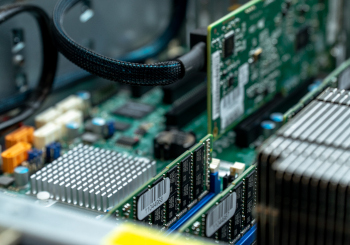The convenience of using IT resources in the outsourcing model (part I)
 How to ensure control over the IT environment located in a cloud computing while maintaining the convenience of using it? It is enough to use the services of a data center operator that openly presents their terms and conditions and clearly explains their advantages and disadvantages.
How to ensure control over the IT environment located in a cloud computing while maintaining the convenience of using it? It is enough to use the services of a data center operator that openly presents their terms and conditions and clearly explains their advantages and disadvantages.
The decision to entrust company IT resources – applications, data and related services – to an external operator should not be rushed. There are a number of criteria to be considered to increase the flexibility of your business without being forced to compromise on security issues at the same time.
There are four types of hosting services provided by independent operators: shared servers, virtual private servers (VPS), dedicated servers and cloud computing. Each of them has different features in terms of how to access resources and control them, performance and security. In this series of articles we will present all types of criteria that should be taken into account when making decisions about choosing the right one for your company.
Decide for yourself about the level of security
Administrators of IT environments most often fear that by using the outsourcing model they will lose control over them. Indeed, in such situation, the service provider takes full responsibility for certain issues – it must guarantee, among others, equipment power supply continuity, air conditioning and physical security of the facility. However, the level of convenience in using the service and the possibility of exercising control depend on the type of hosting:
- Shared server – in this model, resources on the provided server are used by many customers. It is very simple to use them, but the user does not have full control over this environment. It also happens that another customer will start a process that due to excessive power demand or unusual operation characteristics of the application will temporarily disrupt the work of the others (noisy neighbor). The administrator has access only to selected resources (computing power, operating memory, disk space), but cannot manage them from the operating system level.
- Virtual private server – this is a variation of the shared model. Also in this case several virtual servers use one physical device, but the administrator gains control over the operating system. However, there is still a risk (though small) that such server performance will be disturbed by “neighbors”.
- Dedicated server – one of the safest options in terms of business continuity. In this model, in the service provider’s data center the hardware and software are implemented exclusively for the given customer. The customer has full control over the hardware configuration and the installed operating system and applications. Thanks to separation from other servers, there is no risk that the efficient operation of the solution will be disturbed, but there is also a certain limitation – the expansion of the server configuration requires the suspension of its operation, which may mean a break in the operation of the services provided through it.
- Cloud computing – full flexibility, control and security. Thanks to the advanced management platform made available by the service provider, the users can independently and flexibly select the needed hardware and software resources and settle for them depending on the degree or time of their use. Many customers use resources at the same time, but the service provider guarantees their high availability and expected performance.
Each of these four models of cooperation with a professional data center operator has, of course, a different price level for the services used. With the increase in prices, the level of availability of leased IT solutions, the flexibility of developing the environment and its security increase. Therefore, before making a decision about choosing a particular model, it is necessary to make a business (!) decision about the importance of the continuity of work of the systems that the company will use and the applications they support. Naturally, one customer can use several models at once and thus share different types of applications.
In the next article in this series we explain the details about the availability of resources in the cloud environment. We will also show what it has to do with… renting an apartment.




 The website uses cookies as described in our
The website uses cookies as described in our 